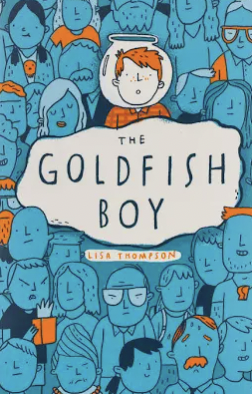|
Yesterday at Story Club, my young writers’ workshop at Thrive cafe, we investigated writing crime.  First we discussed memorable detectives, or detective pairs. Lil and Nedly of Sophie Green’s Potkins and Stubbs series are a pair that stand out to me. In this series the investigators are a little girl and ghost. Detective pairs can have complementary skills. In Potkins and Stubbs, the ghost becomes handy as he can walk through walls and spy on people. But he can’t pick anything up or interact with most humans — Lil has to do all that sort of work. We went through some basics of a crime story.
And of course what is the motive of the detective — why do they want to solve the crime? Fantastic ideas exchanged in the group included two very intelligent pigeons who were stealing things, a mysterious woman in blue, an unlucky detective turning 13, a monster that is very good at hiding and a happiness-stealer who sneaks into dreams. One writer shared her idea of making suspicious characters to draw the reader away from the actual criminal. Though it was a hot, sunny day outside, I felt the chill a good mystery will bring. Better than ice cream!
0 Comments
At Story Club, my young writers’ workshop, we investigated habits and routines. What is our character’s ‘normal’? Do they feed the animals on a farm every morning? Do they have Friday night family dinner? Is there a weekly music lesson they attend? These routines allow us to explore who the character is. What context are they in (do they have responsibilities, is their family close)? Routines of a school like Hogwarts in Harry Potter convey the closeness of the students (shared meals in the Great Hall), along with the magical setting (such as owls delivering morning mail).  After establishing routines and habits we, as the author, can of course … Disrupt Them! This can bring tension into the plot. For example Harry, Ron, and Hermione sneak out of the common room after supper, when the rule is to stay with one’s House. We know this is outside the school’s routine, we know they could get caught. And it gives Neville a reason to try and stop them. We can also show, not tell, the breakdown of a unit by disrupting a routine. For example, if classes are cancelled. Or if family dinner doesn’t go ahead. We’re letting the reader know something is wrong, or has changed. Disrupting routines can also show character growth/change. Perhaps our characters have outgrown music lessons, or they are reacting to something negative that happened, and they no longer want to go to that weekly class. In Goldfish Boy by Lisa Thompson, Matthew’s habit of recording his neighbours’ habits helps him solve a crime. Story Club was brimming with ideas as usual. We had a responsible young girl feeding her pets each morning, before her village is attacked and she strikes out to save them. Another young writer had her character speak to the neighbours each morning, until she doesn’t … a great way to show something is amiss. A yearly summer holiday appears idyllic until Everything Changes (and characters go through a portal!). Other ideas like a weekly doctor’s appointment and a shy girl needing a month before befriending someone new were fabulous lead-ins to stories. We even had the very topical example of the lockdown disrupting ALL routines and how difficult that was for the character who missed her schoolmates.  If you’re in Cambridge, UK, there is a new Free Library (Book Swap) for Young Fiction upstairs at Thrive cafe on Norfolk St. Have some wonderful vegan food or coffee at this friendly, community-minded cafe and go home with a new book! Thank you for reading, and enjoy concocting habits and routines for your characters … and disrupting them!
|
Details
AuthorThis is the blog post of children's author Giulietta M. Spudich. Archives
March 2023
Categories |


 RSS Feed
RSS Feed